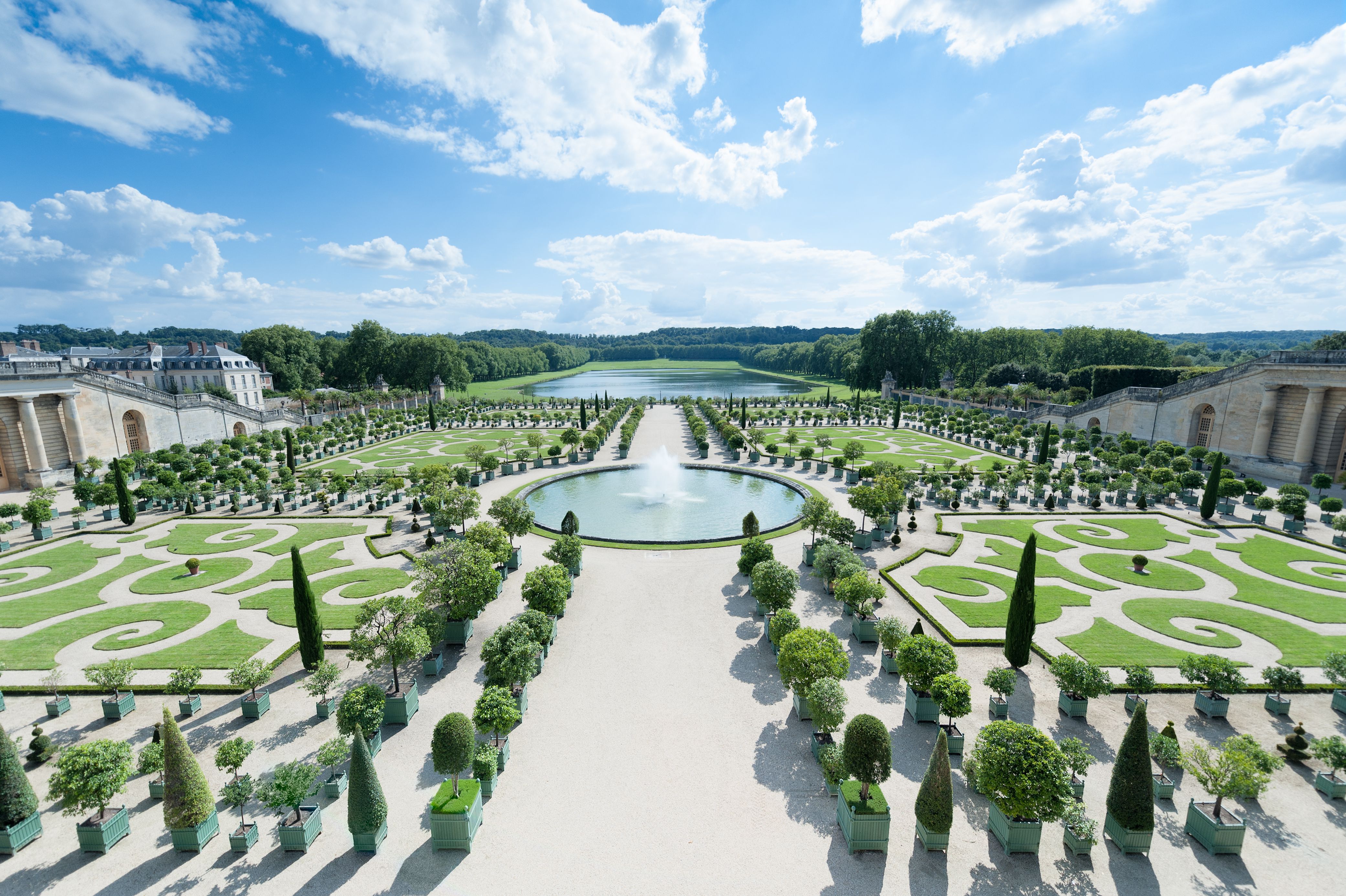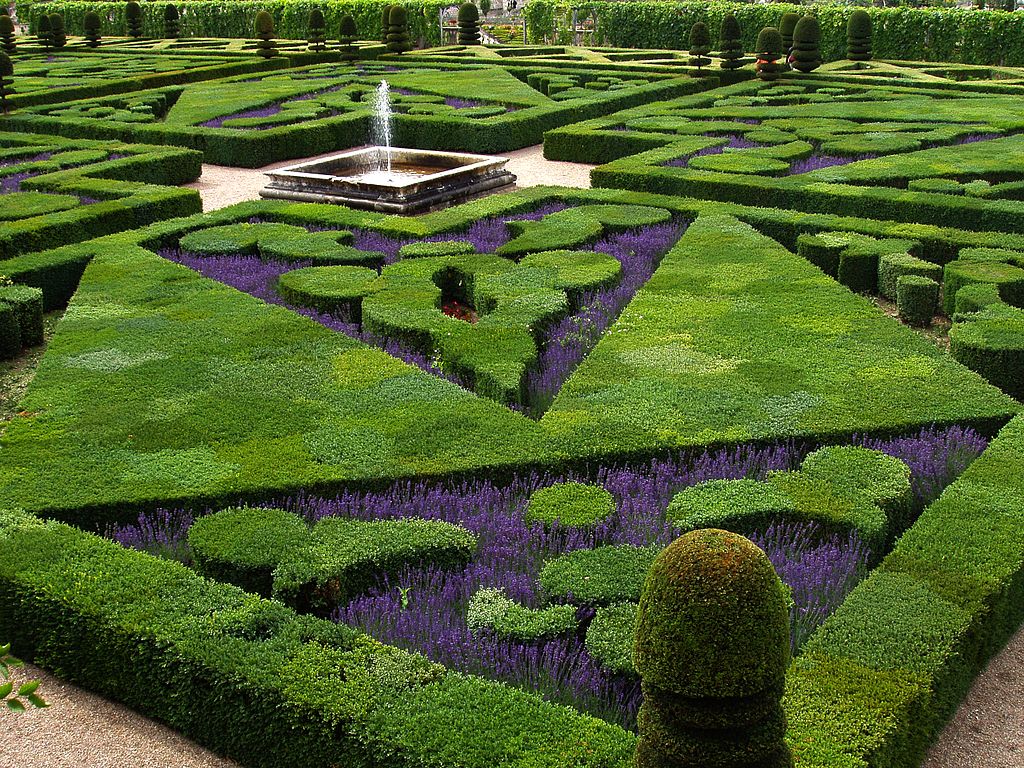Learn about the characteristics of French garden landscapes - Part 1
Referring to France people will immediately think of the famous Eiffel Tower, beautiful beauty and rich culture. A country brings everything from human personality, food, lifestyle to clothing, architecture with complex and soft lines. However, behind the prosperous development of France are countless interesting things that not everyone knows, including the style of French courtyard design is very orderly, lined with many straight lines, geometric layout and symmetry are very impressive, bringing its own characteristics to each garden. Let’s take a look at the French garden’s landscape design!
1. History of the formation and development of the French Garden
Jardin à la française grew from the French Renaissance garden, a style inspired by the Italian Renaissance garden in the early 16th century. The typical Italian garden is the Boboli Garden in Florence and the Medici Villa in Fiesole characterized by small gardens or small plots designed in geometric layout and placed them symmetrically; combined using fountains and waterfalls that animate the garden, paths, stairs and ramps that change levels by level to each garden, featuring caves, mazes and subdivisions; Statue on the subject of mythology. The gardens were designed to symbolize harmony and order, the ideals of the Renaissance and to recall the virtues of ancient Rome.

Boboli Gardens in Florence
Origins: In 1495, King Charler VIII saw the gardens and castles of Naples, he brought Italian craftsmen and gardeners Pacello da Mercogliano from Naples to build Italian-style gardens at the Chateau Keyboardomboise, followed by Henry II's successor, to meet Leonardo da Vinci. Beginning in 1528, King Francis I of France created new gardens at the Chateau de Fontainebleau, including a fountain, a small garden, a forest of pine trees brought from Prvence and the first artificial cave in France. Through many subsequent developments, but all this changed in the mid-17th century with the development of the first real French garden.
Development: The first important garden marked by the Vaux-le-Vicomte Castle was created by Nicolas Fouquet and André Le Notre beginning in 1656. The 1500m garden extends from the base of the castle to the Hercules of Farnese statue, covered with evergreen trees, the alley is decorated with carefully sculpted statues, fountains and peaks.

Vaux-le-Vicomte Castle's backside
André Le Notre continued his success with the vast Versaille Gardens, the largest garden in Europe and the best example of French garden design. In the period from 1662 temple 1700, with an area of 15,000 hectares and placed on a western axis following the sun.In contrast to the vast landscape, reaching to the horizon, the garden creates many constant changes from the fountain, the small garden is full of statues with more humanistic meaning and intimate space. The central symbol of the garden is the sun; the symbol of Luis XIV, illustrated by the statue of Apollo in the central fountain of the garden.

Gardens at the Palace of Versailles
Waves: In 1700, André Le Notre died, but his students and tuwognr ideas continued to be the main point of French garden designs through the reign of Louis XV. A series of gardens appeared for kings, princes and wealthy nobles, gradually inspiring the gardens to continue to be architectural rather than natural.
Some variations in the strict geometric layout of the French garden began to appear. Backward curves and curves have been replaced by grass and flower mats, which are easier to maintain, circles become oval, irregular octagonal shapes appear, gardens have more artificial elements.
In the mid-18th century, English gardens began to become popular, raised by the English nobility and landlords, and in Chinese style, brought to France by Jesuit priests from the Chinese emperor's court. This new style broke the symmetry, nature and rustic landscapes, ending the dominance of the symmetrical garden à la française. In many parks and important areas of France, which still retain their traditional character in the nearest garden, the rest of the park has been converted in a new style, known as jardinlaise (English garden), “anglo-chinois” or “pittoresques”. This marked the end of the French garden, and to date, most of the gardens were inspired not by architecture but by painting, literature and philosophy.
2. French Garden Design Key Features
-
The focus of the garden tends to be the house, usually a palace or castle and the walkways radiate a view of the axis.
-
A central axis of people comes out of the house and perpendicular to the house. The axis extends to the horizon (Versailles) or to statues or an architectural element (Vaux-le-Vicomte). The axis turns south (Vaux-le-Vicomte, Meudon) or east (Tuilerirs, Clagny, Trianon, Sceaux). The main axis consists of a lawn, or a few pots of water bordering the trees.
-
The gravel strip paths and the ridge are combined with the square trimming fence, and ornamental plants are placed in symmetrical pots.
-
The main layout of the garden is designed in a geometric form and is correlated with each other, which is considered the most important. Gardens near the residence are covered with broderies, low wooden box design to resemble patterns of carpets, giving a multicolored effect by planting flowers or with colored bricks, gravel, sand.
-
The water element is often a key feature of French garden design, featuring a lot of round and long rectangular pools combined, along with the reflection of water plus the symmetry that makes for the tranquility of the scene. Fountains and waterfalls are also common, making a point, which is the dynamic element.
-
The overall setting is designed in a view-out-of-the-off style, so the area near the home is planted at a low level usually as a wide grassy lawn, with little or no trees. Parterres near the house can be quite complicated and tend to be simpler from grassy homes.
-
Aisles are often full of trees and trees are always planted in a straight line and add to the symmetry of the garden. Always be carefully trimmed and the top of the tree is always held at a set height.
-
The main architectural elements here are very good statues combined, in addition to the combination with the hut to highlight the garden.
-
In the official French gardens there is usually a terrace from the beginning or its intersection to be seen the whole garden from above.
-
The garden was constantly changing, like sculptures, in a mythological theme.
-
Colors, flowers and trees: The 17th century French Garden has very little flower decoration, limited colors, mainly blue, pink, white and lilac. In 1730, brighter colors such as yellow, red, and orange were introduced from all over the world to Europe. Bonsai, independent trees or shrubs are often pruned into geometric shapes for decoration in Versailles and the gardens, interspersed with statues and vases. The trees in the park are trimmed horizontally and flattened at the top, giving them the desired geometric shape, only in the 18th century, they were allowed to grow freely. The trees used in Versailles are mainly: hornbeam, beech, elm, linden and chestnut.
3. The basic elements that make up the French Garden
- Trees, water and other elements are aligned and symmetric
- The space is neat and placed in the correct position
- Cool colors
- Combination of rock elements.
- The vertical and symmetrical layout is the main characteristic of French gardens, imposing order on nature. An exemplary example of this method of layout is the garden at the Palace of Versailles. It is easy to see symmetrical gravel roads, trees are pruned squarely, axes connected to each other throughout. The tree is usually planted identical, pruned into decorative shapes such as balls, triangles, people want to shape its growth, want to master nature.

Champ-de-Mars seen from the Eiffel Tower
- Cast iron and defined space: Everything has its own place. The main idea is to create an overall sense of order and a controlledness, the tubs used low box wood or intercropped with other shrubs that help define space and keep the edges neat.

The chalk lines mark the location of the planning stage for the garden
- Mix colors in a cool tone: Emphasize green and white. The path is graveled, rows of lavender are purple and in addition other flowers are very little used. Trees and shrubs are pruned in the form of cool green geometries combined with gray and blue iron, pergola or trellis for added fresh color. Water in ponds, fountains are also in circular or rectangular geometric models that always carry white or blue.

The cool blue blue tree neatly trimmed in conjunction with the purple color of lavender creates a cool tone
- Stone element: Stone is an easy factor to incorporate into the design of French gardens, easily seen as gravel path, statues or terraces, stone borders, neatly controlled plants with gravel and stone. The rock-colognf element is the central feature of closed forests or marks intersections, which are also arranged along the path, repeated and ordered.

The stone statue is always the highlight element and is aligned

